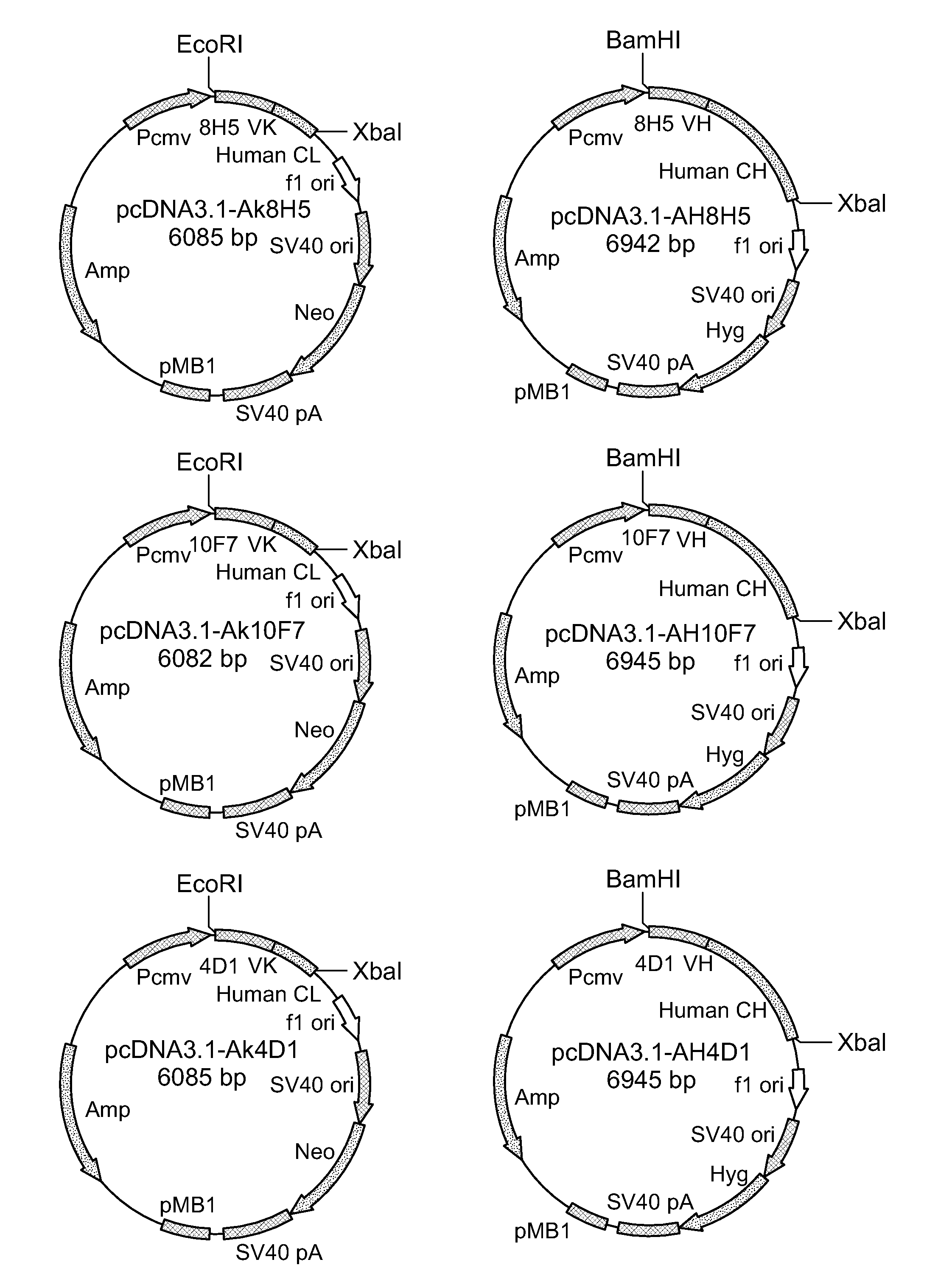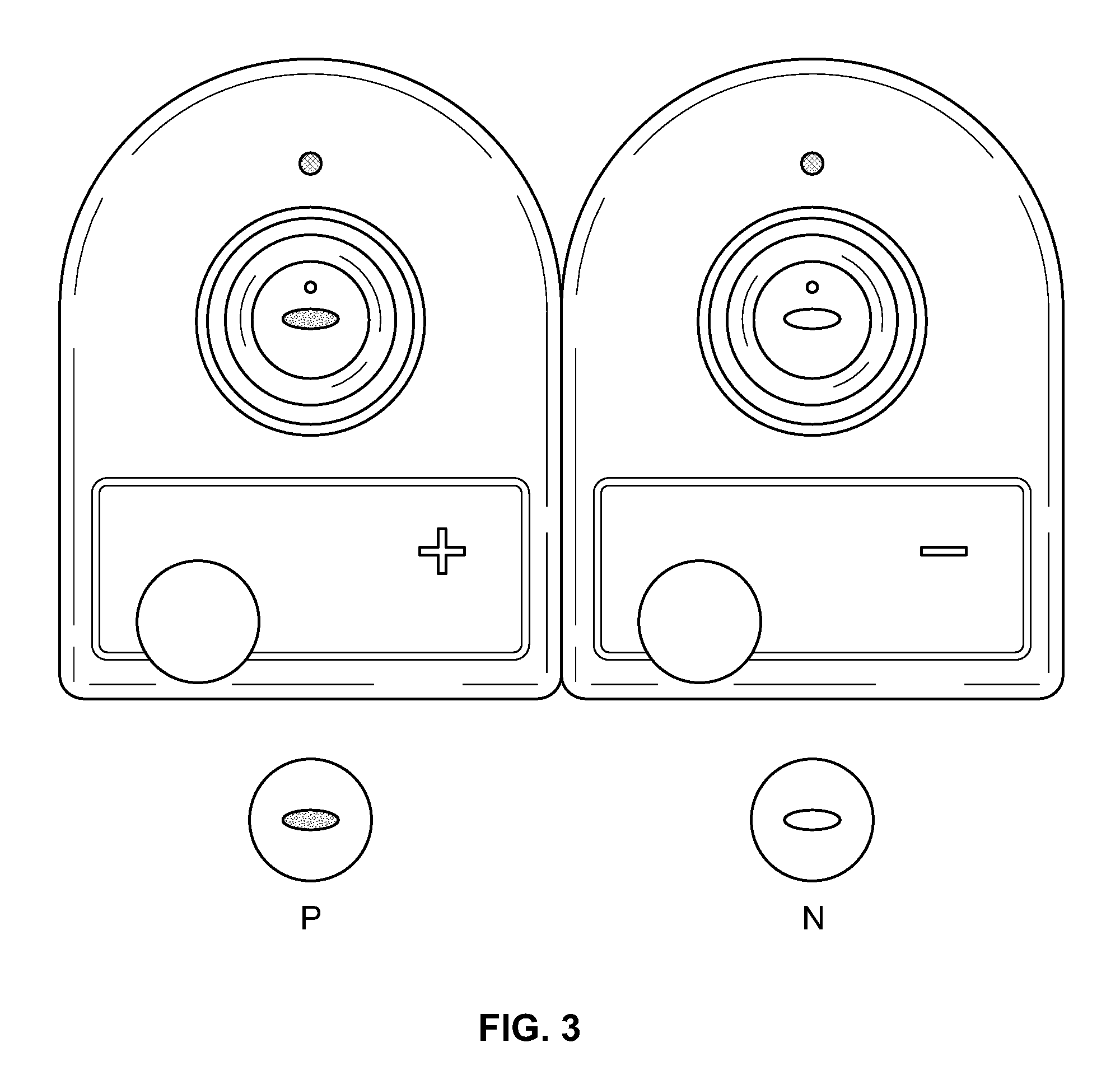Monoclonal antibodies binding to avian influenza virus subtype h5 haemagglutinin and use thereof
a technology of avian influenza virus and monoclonal antibodies, which is applied in the field of monoclonal antibodies binding to avian influenza virus subtype h5 haemagglutinin, can solve the problems of human-to-human infection, brand new and deadly human influenza virus, and difficult control of the further diffusion and transmission of highly pathogenic h5 avian influenza
- Summary
- Abstract
- Description
- Claims
- Application Information
AI Technical Summary
Benefits of technology
Problems solved by technology
Method used
Image
Examples
example 1
Preparation of Monoclonal Antibodies Against the HA Antigen of Subtype H5 of Avian Influenza Virus
[0240]Preparation of Antigen.
[0241]Fertilized 9-day old chick embryos were inoculated with virus strain Ck / HK / Yu22 / 02 (H5N1) (referred to as “Yu22”) for 2 days at 30° C. The chick embryo supernatant was collected to obtain the amplified Yu22 virus. Live Yu22 virus were collected and inactivated with 0.03% formalin at 4° C. The HA antigen of the inactivated virus was detected and the titer of the inactivated virus was measured (please refer to the guidelines of WHO for the specific methods for determining the HA titer and detecting hemagglutination inhibition (HI). We chose the virus strain HA=1024, which was provided by the Microbiology Department of Hong Kong University).
[0242]Mice.
[0243]Six week old female Balb / c mice were purchased from the Anti-Cancer Center of Xiamen University. The mice were kept and tested in the center.
[0244]Production of Hybridoma.
[0245]We used standard in vivo...
example 2
Assembly of an HA Antigen Detection Kit for Subtype H5 Avian Influenza Virus (Using Enzyme Linked Immunosorbent Assay, ELISA)
[0257]The kit used the double-antibody sandwich method to detect the HA antigen of subtype H5 influenza virus in the sample. First, monoclonal antibodies against the HA antigen of subtype H5 influenza virus were pre-attached to the surface of the polythene micro-well plate in the kit box. The subtype H5 influenza virus containing HA antigen was pre-lysed and then added into the micro-well. The pre-attached monoclonal antibody would capture the HA antigens. Then enzyme-labeled monoclonal antibodies were added to the wells and bound to the antigens. At last, the binding results were visualized by the substrate color changes catalyzed by the enzyme. When the sample did not contain any influenza virus antigen or the virus was not subtype H5 influenza virus, the substrate would not change color. The samples could be animal waste, secretions of the mouth and nasal c...
example 3
Assembly of a Detection Kit (ELISA) for Anti-HA Antibody of Subtype H5 Avian Influenza Virus
[0298]The kit used the competition method to detect the specific anti-HA antibody in blood serum samples. First, monoclonal antibodies against the HA antigen of subtype H5 avian influenza virus were pre-attached to the surface of the microwell plate in the kit. Next, recombinantly expressed HA antigens of subtype H5 avian influenza virus were attached to the pre-attached antibodies. When the serum sample and the enzyme-labeled monoclonal antibodies were added to the plate, the specific antibodies in the sample and the enzyme-labeled monoclonal antibodies would compete for binding to the antigens on the plate. If the serum sample could noticeably inhibit the binding of enzyme-labeled monoclonal antibodies to the HA antigens, it would demonstrate that the sample contained the specific anti-HA antibodies. If the sample did not contain the anti-HA antibodies or it was not antibodies against subty...
PUM
| Property | Measurement | Unit |
|---|---|---|
| Fraction | aaaaa | aaaaa |
| Fraction | aaaaa | aaaaa |
| Fraction | aaaaa | aaaaa |
Abstract
Description
Claims
Application Information
 Login to View More
Login to View More - R&D
- Intellectual Property
- Life Sciences
- Materials
- Tech Scout
- Unparalleled Data Quality
- Higher Quality Content
- 60% Fewer Hallucinations
Browse by: Latest US Patents, China's latest patents, Technical Efficacy Thesaurus, Application Domain, Technology Topic, Popular Technical Reports.
© 2025 PatSnap. All rights reserved.Legal|Privacy policy|Modern Slavery Act Transparency Statement|Sitemap|About US| Contact US: help@patsnap.com



